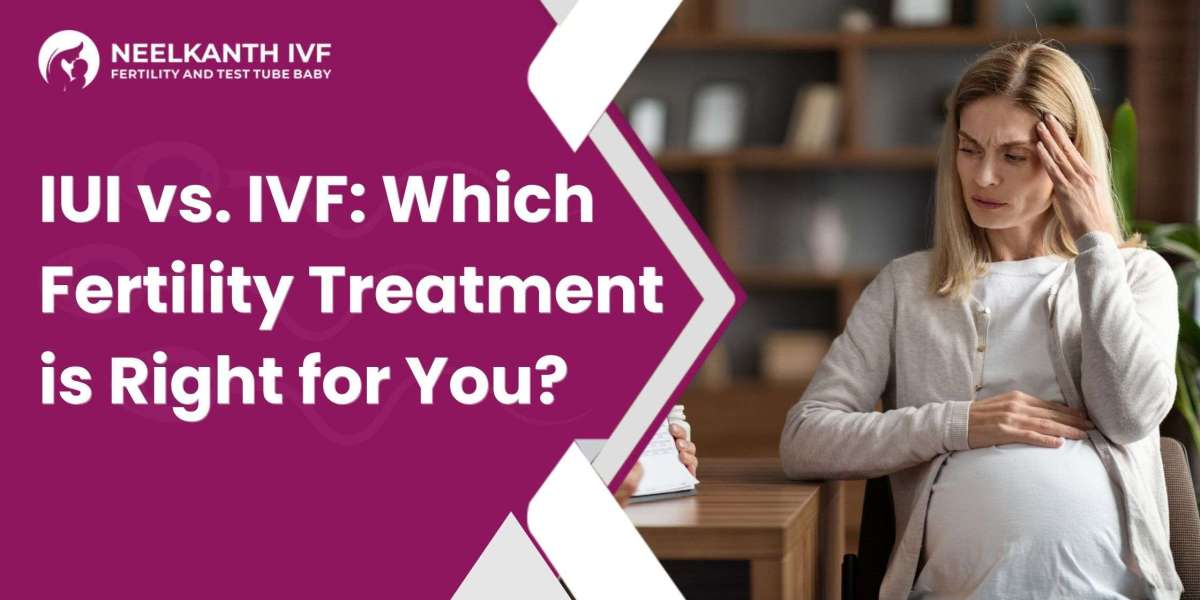In India, countless couples hoping to become parents turn to medical specialists when conception proves more difficult than anticipated. Two of the most frequently suggested procedures are IUI-Intrauterine Insemination-and IVF-In Vitro Fertilisation. Although each treatment shares the same ultimate goal, they differ significantly in methodology, typical indications, and success statistics. Choosing one over the other usually hinges on a person's medical history, the specific cause of infertility, and lifestyle circumstances that shape every couple's journey.
If you find yourself weighing these options, this overview aims to equip you with clear, unbiased information so that you can decide with confidence.
What Are IUI and IVF?
Before you can choose between them, it helps to know precisely what each therapy entails.
What is IUI?
IUI, short for Intrauterine Insemination, is a relatively straightforward procedure in which specially prepared sperm from a partner or donor are deposited directly into the uterus just before ovulation. By placing the sperm closer to the egg, doctors hope to boost the chances of natural fertilisation. Because of its low invasiveness and moderate cost, IUI is commonly recommended as the first step for patients with mild to moderate fertility challenges.
What is IVF?
In Vitro Fertilisation, usually shortened to IVF, involves retrieving eggs from a woman's ovaries and fertilising them with sperm outside the body in a lab. After a few days, healthy embryos are placed back into the uterus, with the hope that one will attach and grow into a pregnancy. Because the process bypasses some reproductive barriers, IVF is often recommended for couples facing serious fertility challenges, and its overall success rate tends to exceed that of Intrauterine Insemination (IUI).
Key Differences Between IUI and IVF
Though both treatments support couples trying to conceive, they do so in very different ways, and their costs and clinical demands can feel worlds apart. For instance, the cost of IVF treatment in India typically ranges from ₹1,00,000 to ₹2,50,000, depending on the clinic and additional procedures involved. Because of this, selecting the right option should rest on your specific medical picture. The table below summarises the main features.
Aspect | IUI | IVF |
Procedure | Sperm is placed directly in the uterus. | Eggs are fertilised outside the body, and embryos are later transferred to the uterus. |
Suitability | Best for mild infertility or unexplained cases. | Ideal for more complex problems, like blocked tubes or a low number of eggs. |
Cost | Generally affordable, between ₹10,000 and ₹25,000 per cycle. | More expensive, usually ₹1.5 lakh to ₹2.5 lakh or more in India. |
Complexity | Non-invasive, quick, and needs only mild hormonal support. | Highly technical; requires ovarian stimulation, egg retrieval, and lab fertilisation. |
Success Rate | About 10 per cent to 20 per cent per cycle, on average. | Ranges from 4 per cent to per cent and is often higher for younger women. |
Time Commitment | Minimal; usually one or two visits per cycle. | Intensive; involves multiple appointments over several weeks. |
Factors to Consider When Choosing Between IUI and IVF
Deciding between IUI and IVF is never purely clinical-it also reflects your personal goals, budget, and lifestyle. Here is a closer look at the main points you may want to weigh before moving forward.
Cause of Infertility
IUI is typically considered when the cause remains unexplained or when male factors, such as mild low sperm motility or count, are present.
Cervical Mucus Issues
Except for exclusionary infertility factors, such as tubal blockages or malefactor diagnoses related specifically to cervical mucus, call for attention that joins lower-tech guidance, cycle surveillance, and, sometimes, insemination.
Ovulatory Disorders
A strained ovulatory rhythm still prioritises IVF for preurogenital anomalies, even mild oocyte deficits, mature tubes needing recanalisation and severe oligospermia.
1. IVF is Suitable for:
Blocked or damaged fallopian tubes
Severe male infertility
Endometriosis
Previous failed IUI cycles
Low ovarian reserve
2. Age of the Woman
Women under 35 typically have higher chances of success with both IUI and IVF. However, as age increases, egg quality and quantity decline. For older women, especially those over 35, IVF is often more effective as it allows better control and selection of healthy embryos.
3. Cost and Budget
Cost remains a principal concern for many couples in India. IUI is considerably less expensive, allowing patients with tighter budgets to proceed. IVF, though costly upfront, may in practice deliver stronger outcomes and therefore fewer cycles, minimising total time and emotional strain.
4. Number of Attempts
In standard practice, clinicians advise three to four cycles of IUI before moving to IVF. That guideline shortens if IUI falters continuously or time shrinks, as in advanced maternal age, pressing couples toward IVF sooner.
5. Success Rates
IUI carries an optimistic yet moderate success statistic; IVF yields higher reliability. Those prioritising rapid conception, for personal or medical grounds, should weigh IVF as their most straightforward pathway.
Pros and Cons of IUI and IVF
Advantages of IUI
The procedure is less invasive, involving only a catheter insertion and no sedation.
Cost is substantially lower, making it a feasible option for many couples.
Fewer medications result in minimal side effects and easier monitoring.
A complete cycle usually requires just a few clinic visits, so the timeline is brief.
Disadvantages of IUI
Success rates remain modest, particularly in women over 35.
It is inappropriate when sperm quality is severely compromised or when both tubes are blocked.
Cycle after cycle may be needed, accumulating emotional fatigue and financial burden.
Advantages of IVF
For women under 35, success rates can be markedly high.
The method addresses polycystic ovaries, endometriosis, or uterine issues effectively.
Pre-implantation genetic testing can screen embryos for hereditary disorders.
Couples may choose donor eggs, sperm, or frozen embryos when needed.
Disadvantages of IVF
Out-of-pocket expenses are substantial, sometimes exceeding a year's salary.
Daily hormone injections and egg retrieval are both physically and psychologically taxing.
In rare instances, overdosing on these medications can lead to ovarian hyperstimulation syndrome.
Success Rates in the Indian Context
Success rates for IUI and IVF vary based on individual factors and clinic expertise. Here's a general overview with an Indian perspective:
IUI Success Rates in India:
The average success rate is about 10%-20% per cycle.
Younger women (under 30) and those with mild infertility have higher chances.
IVF Success Rates in India:
IVF typically ranges from 40%-50% per cycle for women under 35.
Success rates decline with age, falling to roughly 20 to 30 per cent for women over 40.
Techniques such as frozen embryo transfer and pre-implantation genetic testing can significantly improve these odds.
Tips for Couples Choosing Fertility Treatment
Consult an Expert
Book time with a reproductive endocrinologist who will review your history, run essential tests, and outline a tailored plan. Reputable urban clinics in India usually handle both intrauterine insemination and in vitro fertilisation regularly.
Financial Planning
Know all fees up front and consider payment plans, including equated monthly instalments or insurance cover. Certain state-sponsored programmes are beginning to subsidise select fertility services.
Be Realistic About Success Rates
Entering treatment with moderate expectations and a readiness for multiple cycles can soften disappointment and build emotional resilience.
Explore Holistic Support
Combine medical care with balanced nutrition, regular exercise, and relaxation practices like yoga or meditation to potentially boost outcomes; these strategies are widely available across the country.
Do Thorough Research on Clinics
Select a centre that publishes transparent statistics, employs experienced embryologists, and earns positive reviews from former patients.
Final Thoughts
In India, IUI and IVF have opened the door to parenthood for many couples. IUI is generally less invasive and lighter on the budget, while IVF provides a proven solution when fertility challenges are more difficult. The decision should therefore combine an honest look at your health, available funds, and what feels right to you. With guidance from a knowledgeable fertility specialist, such as the Best IVF Clinic in Udaipur, you can map out the option that fits your circumstances and move forward with greater confidence.






